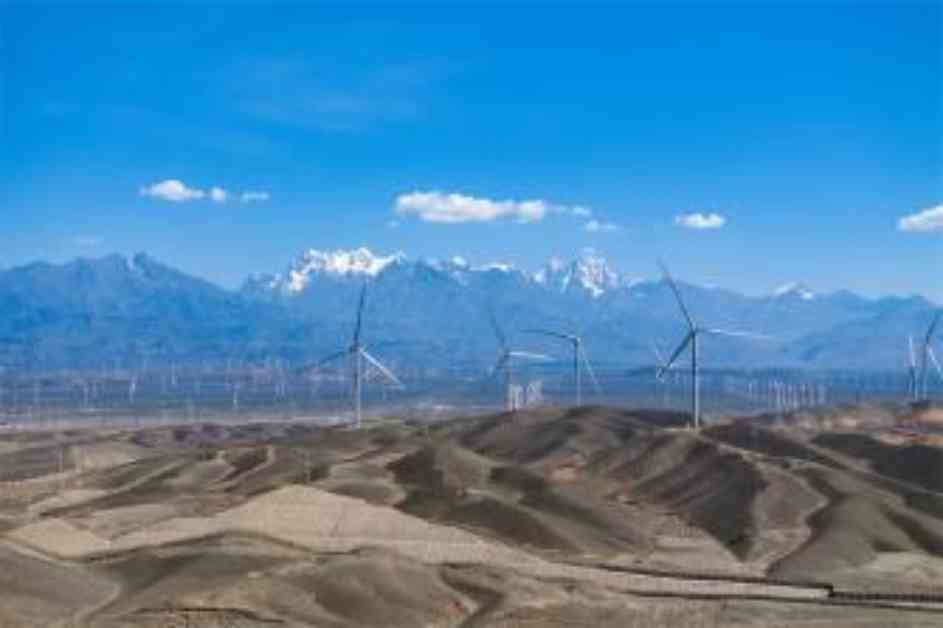Xinjiang Uygur Autonomous Region Leads the Way in New Energy Development
Xinjiang Uygur Autonomous Region, located in Northwest China, has been making significant strides in the field of new energy development. With abundant resources in the form of strong winds and long hours of sunlight, Xinjiang has seen a remarkable increase in its newly installed capacity of new energy during the first half of 2021. According to local authorities, the region’s new energy capacity has surged by 103 percent year-on-year, placing it at the forefront of the country’s renewable energy sector.
The region’s commitment to renewable energy is evident in the substantial growth of investment in wind and photovoltaic (PV) power generation projects. Investments in these projects have increased by nearly 37 percent year-on-year, accounting for 15.7 percent of fixed-asset investment in Xinjiang. This growth has contributed to a 4.5 percentage point increase in fixed-asset investment growth, highlighting the region’s dedication to sustainable energy development.
Investment in PV Power Generation Projects Takes Center Stage
One of the key highlights of Xinjiang’s new energy industry is the significant investment in PV power generation projects. More than 70 percent of the total investment in new energy in the region is allocated to PV projects, with a year-on-year growth of 36.5 percent. This substantial investment has positioned PV power generation as a cornerstone of Xinjiang’s renewable energy industry layout, signaling a shift towards cleaner and more sustainable energy sources.
According to industry analysts, the increased investment in new energy projects in Xinjiang is not only beneficial for the region but also plays a crucial role in enhancing power supply and transmission capabilities across western regions of China. The construction of new power systems and the promotion of high-quality development of new energy sources are driving large-scale equipment upgrades and renovations, leading to a more efficient and sustainable energy infrastructure.
Xinjiang’s Clean Energy Contribution to Carbon Emissions Reduction
Xinjiang’s abundance of clean energy resources, including wind and solar power, has enabled the region to make significant contributions to reducing carbon emissions. By the end of 2023, clean electricity transmitted from Xinjiang to other regions amounted to 210 billion kWh since the inception of the electricity transmission program in 2010. This has resulted in a reduction of approximately 171.52 million metric tons of carbon dioxide emissions, underscoring Xinjiang’s role in combating climate change through the adoption of renewable energy sources.
As of now, Xinjiang’s new energy installed capacity exceeds 80 million kilowatts, accounting for over 50 percent of the total installed power capacity in the region. This impressive capacity reflects Xinjiang’s commitment to harnessing its local resources for the development of new energy sources. With a focus on continuous innovation and resource utilization, Xinjiang aims to elevate its new energy development to new heights in the coming years.
National Recognition of Xinjiang’s New Energy Achievements
Data from the National Energy Administration highlights Xinjiang’s significant contribution to the national new energy landscape. In the first half of 2021, Xinjiang’s newly installed capacity of new energy reached 14.08 million kilowatts, with wind power accounting for 4.28 million kilowatts and PV power totaling 9.8 million kilowatts. This represents a remarkable 103 percent year-on-year increase in new energy capacity, solidifying Xinjiang’s position as a key player in the renewable energy sector.
Xinjiang’s new energy installed capacity now surpasses 10 percent of the national total, showcasing the region’s substantial impact on China’s renewable energy goals. With a strong foundation in wind and solar power generation, Xinjiang continues to lead the way in new energy development, setting a precedent for other regions to follow in the transition towards a cleaner and more sustainable energy future.
In conclusion, Xinjiang Uygur Autonomous Region has emerged as a frontrunner in new energy development, leveraging its abundant resources and strategic investments to drive the growth of renewable energy sources. With a focus on innovation, sustainability, and carbon emissions reduction, Xinjiang’s achievements in the new energy sector serve as a testament to the region’s commitment to building a greener and more environmentally friendly energy landscape for future generations.

















